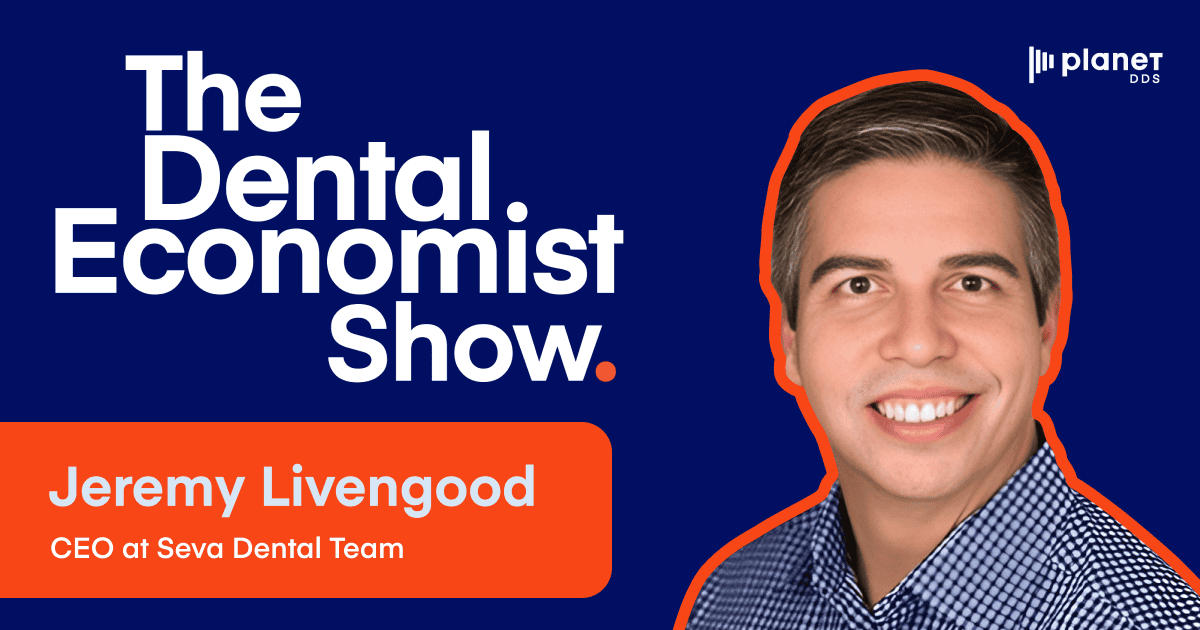Jeremy Livengood on Building a Legacy Dental Organization Through Solid Culture

Being the new kid on the block can be a daunting affair—especially in the modern dental industry. Not if you’re Jeremy Livengood, CEO of Seva Dental, though. He joins CRO Mike Huffaker of Planet DDS on the latest episode of The Dental Economist Show to explore the power of culture-first leadership, managing practice transitions with empathy, and implementing technology changes that drive real results.
What you’ll learn:
- How to maintain practice culture during DSO transitions by respecting legacy and managing emotional transitions
- Why implementing new technology requires clear communication of the “why” to ensure team adoption and success
- The framework for successful practice management software transitions through transparency and comprehensive support
- How to integrate AI and new dental technologies without overwhelming staff or disrupting patient care
- Why focusing on “right people, right seats” is crucial for scaling DSO operations while preserving culture
- Why maintaining a private practice feel within a DSO structure can drive long-term success
The conversation proves that unsurprisingly, even in an era of tech dominance, dentistry can’t afford to lose its personal touch.
Episode Highlights
In this episode, host Mike Huffaker welcomes Jeremy Livengood for an outside-in perspective on practice transition management and the surprising emotional truths that accompany the process. Here are some highlights from the show:
The X factor: Emotional intelligence in practice transitions
Livengood emphasizes that dental practice transitions are fundamentally about people and legacy, not just paperwork and processes and leaders must recognize that practices represent decades of personal investment from doctors, staff, and patients, making emotional considerations crucial during transitions.
The key is introducing operational and clinical changes gradually while acknowledging the emotional attachment of all stakeholders—an approach that helps to preserve the practice’s community connections while implementing necessary modernizations.
Why transparency drives technology implementation
When implementing new practice management systems, Livengood emphasizes the power of upfront transparency and comprehensive support. He opines that clear communication about what will and won’t transfer during system migrations, coupled with immediate solutions for critical gaps, are key.
The strategy includes providing extensive training support and maintaining constant communication throughout the transition process. Success comes from treating technology changes as a collaborative journey rather than a mandate, resulting in progressively smoother implementations across their network.
Maximizing technology integration through synergy
Livengood shares insights on avoiding the common pitfall of accumulating disconnected dental technologies. The focus should be on creating seamless integrations between systems, rather than adding isolated solutions.
Technology adoption improves dramatically when systems work together cohesively, feeling like one unified solution rather than separate tools. This approach reduces team frustration and increases the likelihood of consistent, long-term utilization.
Enabling purposeful technology adoption
The key to successful technology implementation lies in clearly communicating its purpose and benefits to the team. Livengood suggests that starting small with manageable goals, such as one doctor performing one procedure daily, creates sustainable adoption patterns.
This is because teams need to understand how new tools make their lives easier rather than just adding complexity to their workflow—a measured approach to innovation that ensures better buy-in and long-term success with new technologies.
The Dental Economist Show
Don’t miss insightful conversations with industry experts on the latest trends and top strategies to grow your DSO or dental business. Tune in to The Dental Economist Show each week as we meet at the intersection of profit and purpose.
Listen to the full podcast:



